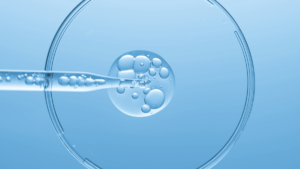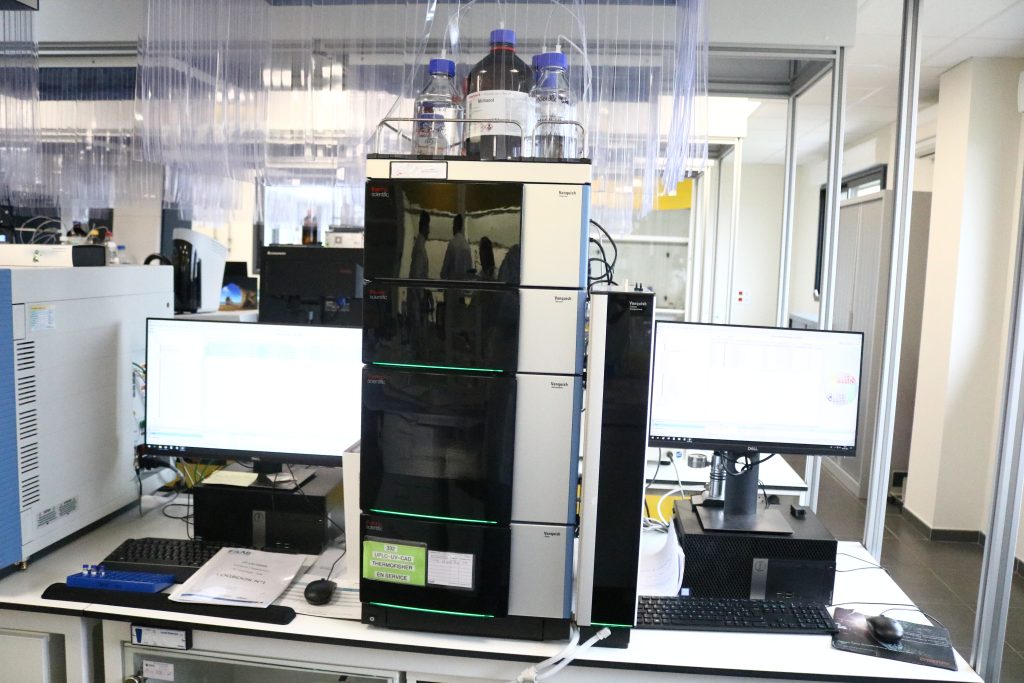Your needs: control the presence of levulinic acid in your cosmetic products
What is levulinic acid?
Of natural origin, levulinic acid is mainly produced from renewable raw materials (cellulose, sugars, vegetable oils). It is considered a green and sustainable chemical due to its renewable origin.

Why perform levulinic acid laboratory tests?
Laboratory analysis of levulinic acid can be useful for a number of reasons:
- Determining the concentration of levulinic acid in a sample
- Assessing the quality and purity of levulinic acid used in cosmetics and medical treatments.
- Understand the physical and biochemical properties of levulinic acid and its interaction with other molecules.
- Identify structural variations or post-translational modifications of levulinic acid that may have functional implications.
In short, the analysis of this acid will enable us to better understand its role in the body, and optimize its use in the medical and cosmetic fields.
Our solutions: rapidly provide reliable technical resources to assess the quality of your levulinic acid-based products.

How can FILAB help you?
Levulinic acid is considered a promising alternative to petroleum-derived chemicals. It offers advantages such as high durability, low toxicity and biodegradability. Its use is being studied as part of the development of more environmentally-friendly products and the transition to a more sustainable economy.
FILAB, an independent laboratory based in Dijon, has been active for 30 years in the chemical, cosmetics and medical device sectors, through conformity analysis and control of raw materials.
What technical resources are used for levulinic acid analysis?
In addition, FILAB offers a wide range of analytical tools (ICP-MS and ICP-AES, GC-MS, CI and LC, etc.), from design to manufacture and marketing. Our analytical resources enable us to study your levulinic acid-based products and provide the following services:
- Chemical analysis, levulinic acid assay, BDDE assay, lidocaine chlohydrate assay
- Stability studies under given conditions to assess the shelf life and storage conditions of levulinic acid-based products
- Additive analysis
- Heavy metal analysis (under COFRAC ISO 17025 accreditation)
- Search for impurities and contamination
- Compatibility studies (extractables and leachables, container/content)
- Analytical method development
Guaranteeing rapid response to your requests, FILAB supports cosmetics and healthcare companies in solving complex problems. We also support R&D projects (bibliographic studies, specifications, substitution studies, synthesis, etc.).
Levulinic acid can be analyzed for a number of reasons:
- Characterization and quality control The analysis of levulinic acid enables us to characterize its chemical composition, purity and any impurities. This ensures that the levulinic acid used meets the quality specifications required to ensure the efficacy, safety and conformity of the final products.
- Stability and compatibility studies: to assess its stability and compatibility with other formulation components, such as active drugs or other excipients. This helps guarantee the stability and integrity of final products during their shelf-life.
- Toxicity and safety assessment: Levulinic acid can be analyzed to assess its potential toxicity. It is important to understand the adverse effects or risks associated with the use of levulinic acid in medical products in order to ensure patient safety. Toxicological studies can be carried out to assess the maximum acceptable dose and safety of levulinic acid.
- Production process optimization: Levulinic acid analysis can be used to optimize industrial production processes. By monitoring levulinic acid levels at different stages of the process, it is possible to adjust reaction, purification or synthesis conditions to maximize yield, minimize impurities or improve the overall efficiency of the manufacturing process.
Levulinic acid is a chemical compound of great interest to the cosmetics industry. A cosmetics manufacturer may wish to carry out :
- a stability study
- a natural preservative analysis
- a compatibility study with other ingredients








